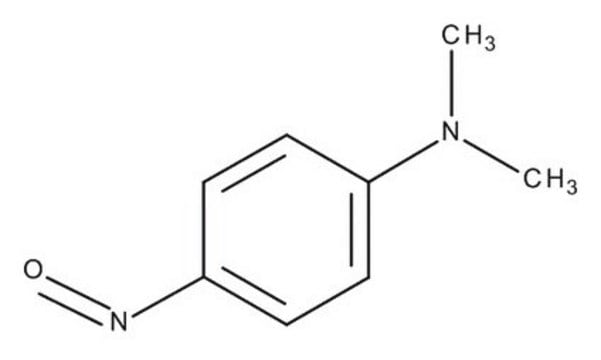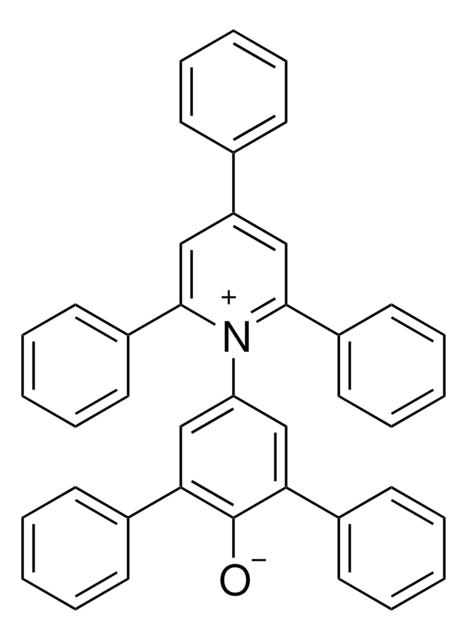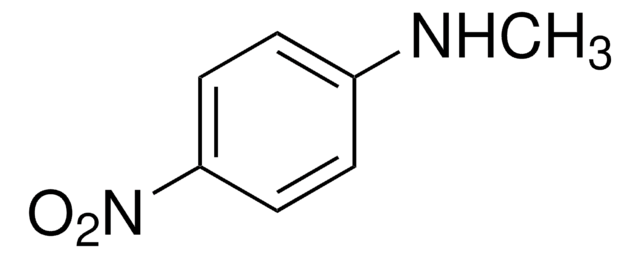D172405
N,N-Dimethyl-4-nitrosoaniline
97%, powder or chunks
Sinônimo(s):
4-Nitroso-N,N-dimethylaniline
Selecione um tamanho
Selecione um tamanho
About This Item
Produtos recomendados
Nome do produto
N,N-Dimethyl-4-nitrosoaniline, ≥97%
Nível de qualidade
Ensaio
≥97%
Formulário
powder or chunks
pf
85-87 °C (lit.)
solubilidade
ethanol: 5% (green to very dark green)
aplicação(ões)
diagnostic assay manufacturing
hematology
histology
temperatura de armazenamento
room temp
cadeia de caracteres SMILES
CN(C)c1ccc(cc1)N=O
InChI
1S/C8H10N2O/c1-10(2)8-5-3-7(9-11)4-6-8/h3-6H,1-2H3
chave InChI
CMEWLCATCRTSGF-UHFFFAOYSA-N
Procurando produtos similares? Visita Guia de comparação de produtos
Categorias relacionadas
Aplicação
Ações bioquímicas/fisiológicas
Palavra indicadora
Danger
Frases de perigo
Declarações de precaução
Classificações de perigo
Acute Tox. 3 Oral - Eye Irrit. 2 - Self-heat. 1 - Skin Irrit. 2 - Skin Sens. 1 - STOT SE 3
Órgãos-alvo
Respiratory system
Código de classe de armazenamento
4.2 - Pyrophoric and self-heating hazardous materials
Classe de risco de água (WGK)
WGK 3
Ponto de fulgor (°F)
Not applicable
Ponto de fulgor (°C)
Not applicable
Equipamento de proteção individual
Eyeshields, Faceshields, Gloves, type P3 (EN 143) respirator cartridges
Escolha uma das versões mais recentes:
Já possui este produto?
Encontre a documentação dos produtos que você adquiriu recentemente na biblioteca de documentos.
Os clientes também visualizaram
Active Filters
Nossa equipe de cientistas tem experiência em todas as áreas de pesquisa, incluindo Life Sciences, ciência de materiais, síntese química, cromatografia, química analítica e muitas outras.
Entre em contato com a assistência técnica













